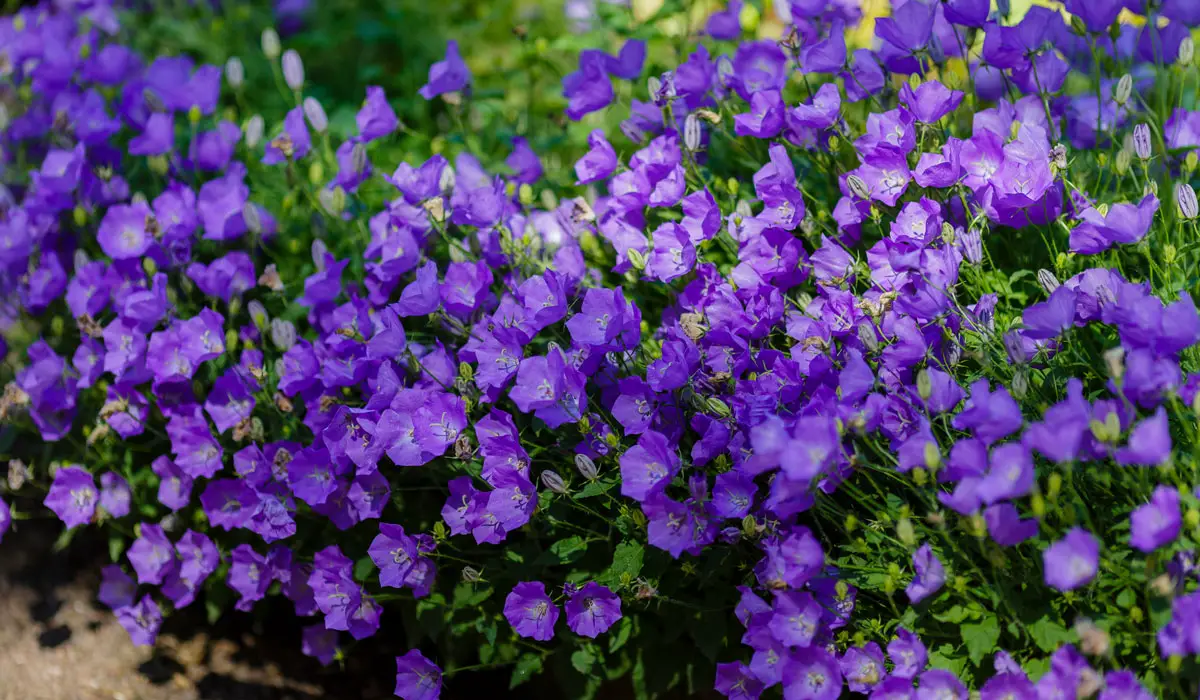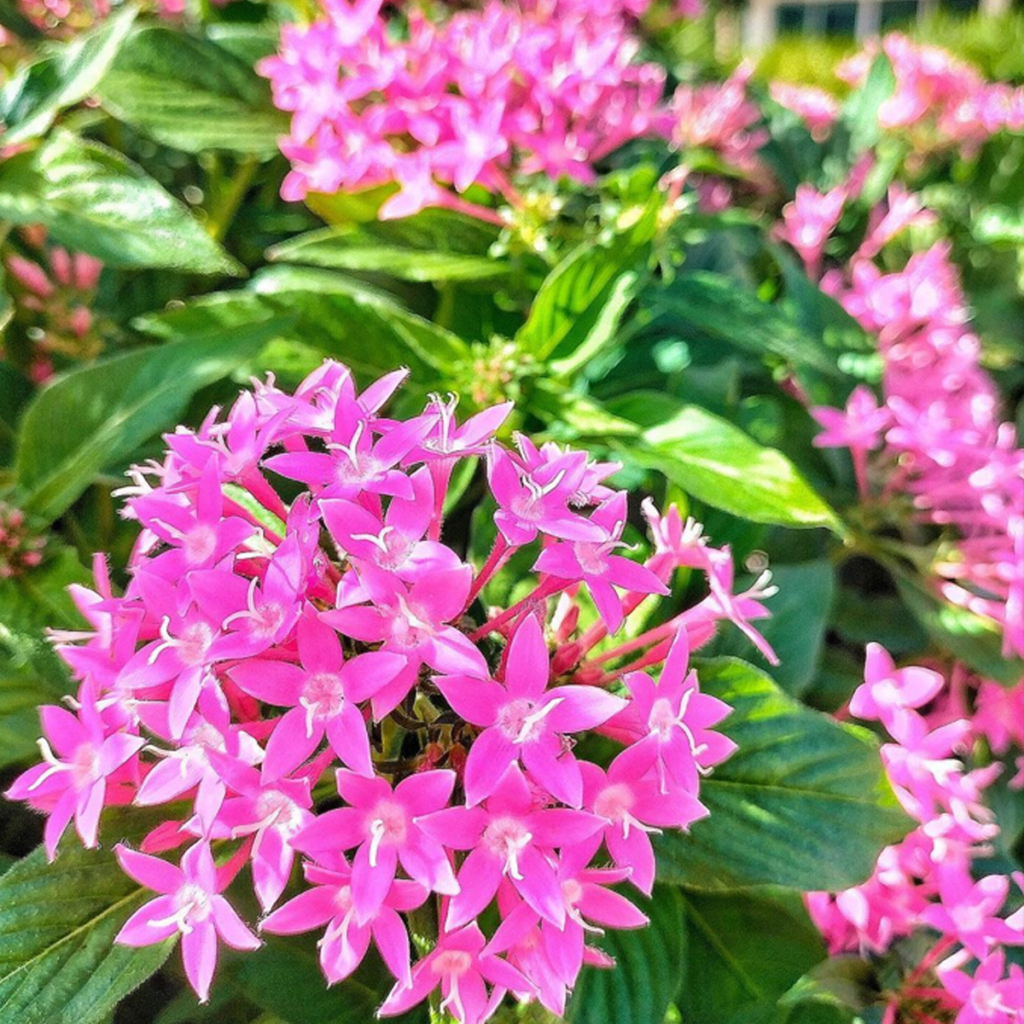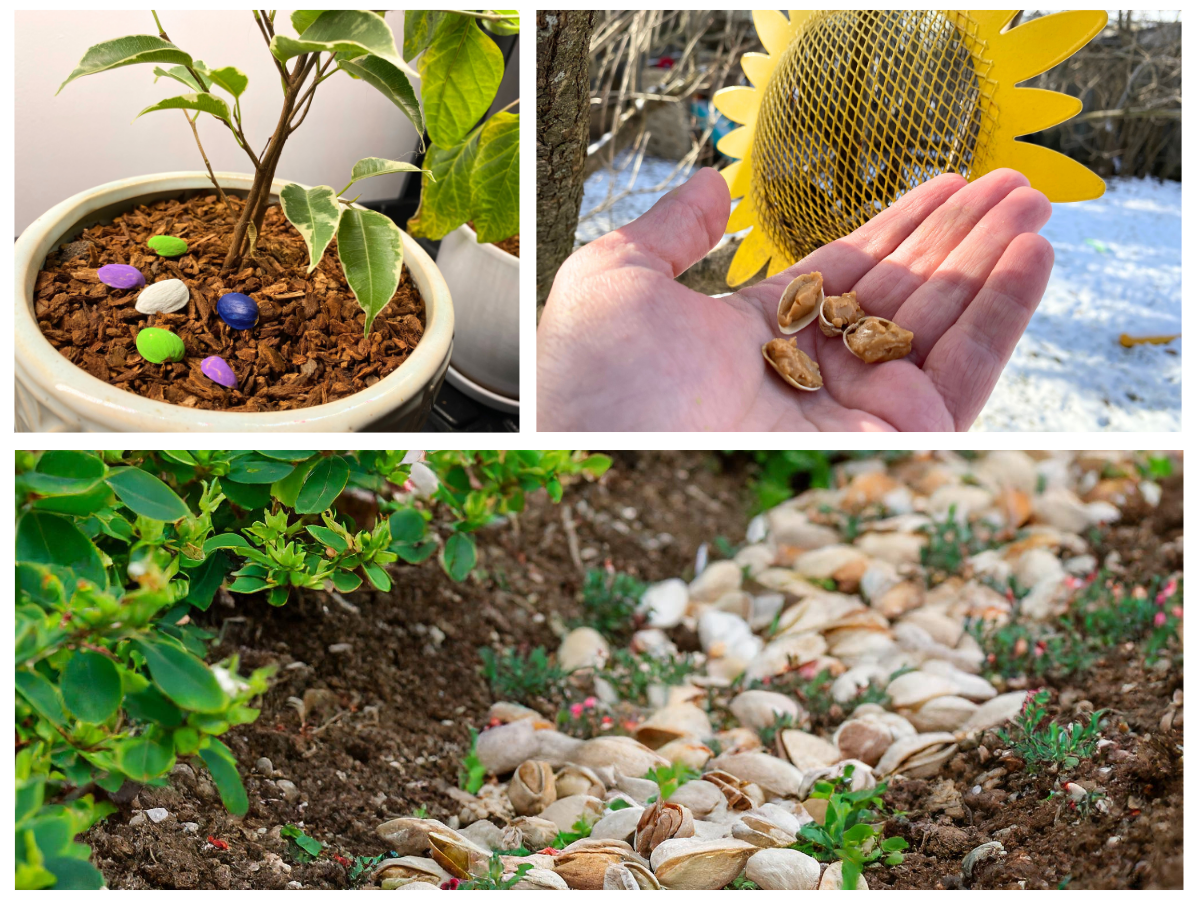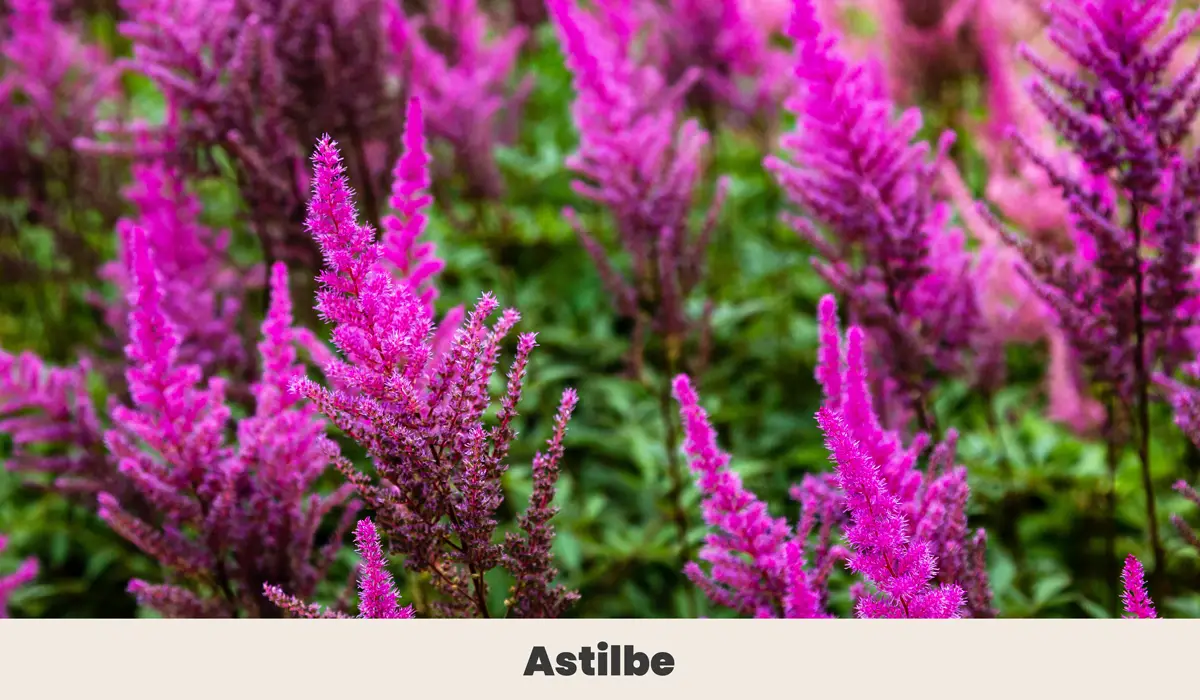11 Perennial Flowers That Bloom All Summer Long +Grow Guide

Who doesn’t love the ambiance perennial plants provide? Besides keeping the outdoors vibrant, these plants can save you the hassle of replanting each spring while providing full bloom periods in the summer, spring, and fall. However, most perennial plants only bloom for a short period.
Fortunately, several perennial plant species with longer bloom periods can start blooming in spring, stay in full bloom throughout summer until fall and naturally repeat the cycle next year.

Here’s a comprehensive list of the top 11 perennial flowering plants you can plant in your flower garden to make it low maintenance and bloom throughout the summer.
“Flowers always make people better, happier, and more helpful; they are sunshine, food, and medicine for the soul.”
Luther Burbank.
1. Blanket Flower (Gaillardia pulchella)

The blanket flower is a brightly-colored perennial flowering plant producing flowers in shades ranging from yellow, bronze, orange, and red. The vibrant colors create a soothing sense of excitement and serenity in your garden.
The plant is also drought-resistant and low-maintenance, making it a perfect choice for a hassle-free garden.
| Botanical Name: | Gaillardia pulchella |
| Growth Rate: | Fast |
| Native Range: | Western States like the Great Plains, Great Lakes, and areas of New England |
| Hardiness Zones: | 3,4,5,6,7,8,9 |
| Dangers: | Can cause skin and eye irritation |
| Soil Needs: | Loamy, sandy, well-drained soil |
| Tolerate: | Salt and Dry Sites |
| Ease of Care: | Does not require much care and can thrive well in hot and sunny climates |
| Diseases: | Leaf spots, powdery mildew, aster yellows |
| Propagation: | Through seed, division, shoot-tip cuttings, or tissue culture |
| Fertilizer: | These plants don’t require overlay fertilizer or a nutrient-rich soil to thrive |
| Pests: | These plants don’t require overlay fertilizer or nutrient-rich soil to thrive |
| Blooming Period: | Long (Summer to Fall) |
| Pruning: | Late summer to let the plant flower through fall |
| Water needs: | One inch of water per week |
2. Shasta Daisy (Leucanthemum × superbum)

It’s a cheerful perennial flowering plant that pairs beautifully with other plants like coneflowers, black-eyed Susans, and salvia.
Typically, the plant has been used as a filler in container gardens or used as a border. The flowers are large and are white or yellow. They’re known for their delicate petals that are often mimicked by other flowers that look like daisies.
| Botanical Name: | Leucanthemum × superbum |
| Growth Rate: | Fast |
| Native Range: | Although plants in the Leucanthemum genus are native to Asia and some parts of Europe, the Shasta Daisy was created in the U.S. after a quadruple hybrid cross |
| Hardiness Zones: | 5,6,7,8,9 |
| Dangers: | All varieties of Leucanthemum are toxic to pet animals like dogs and cats |
| Soil Needs: | Loamy, well-drained, and moist soil |
| Tolerate: | Changing temperature and humidity levels |
| Ease of Care: | Can be grown on varying soils, as long as the soil is well-drained. Partial or full sun can be used |
| Diseases: | Verticillium wilt |
| Propagation: | Division of clumps formed over time |
| Fertilizer: | Compost, organic matter, or a balanced fertilizer (10-10-10) can be added in early spring |
| Pests: | Leafminers, caterpillars, and cutworms, whiteflies, aphids, spider mites, thrips |
| Blooming Period: | Long |
| Pruning: | Start in the fall and cut the plant back to three inches above the ground |
| Water needs: | One to two inches of water per week |
3. Hardy Geranium (Geranium)

Commonly referred to as cranesbills, this low-maintenance and versatile flowering plant produces vivid and delicate flowers starting in late spring with shades of blue, white, and purple.
Add these blooms to your garden for a touch of elegance or to provide ground cover and suppress unwanted growth of weeds.
| Botanical Name: | Geranium |
| Growth Rate: | Five to six feet in one season |
| Native Range: | Woodlands of Eastern North America |
| Hardiness Zones: | 4,5,6,7,8,9 |
| Dangers: | Non-irritant but can cause skin irritation, allergy, or trigger contact dermatitis in some people |
| Soil Needs: | Well-drained and nutrient-rich soil |
| Tolerate: | Tolerant to extremely cold temperatures |
| Ease of Care: | Low maintenance |
| Diseases: | Gray mold, Leaf spot disease, powdery mildew, cucumber mosaic, rust |
| Propagation: | Seeds, stem rooting, root division, and semi-ripe wood cuttings |
| Fertilizer: | Don’t add fertilizer unless the soil is very poor. Adding compost throughout the year will suffice. For poor soil, add a time-release balanced fertilizer |
| Pests: | Geranium sawflies, aphids, fall cankerworms, cabbage loopers, four-lined plant bugs, and slugs |
| Blooming Period: | Long (Late spring to late fall) |
| Pruning: | Cut to the ground level after the first lower flush |
| Water needs: | Always water when the top inch of soil feels dry |
4. Reblooming Daylily (Stella de Oro)

These perennial flowering plants have a long blooming season which starts in late Spring and continues throughout fall. This long blooming period is the main reason most gardeners like adding the reblooming daylily to add accent and color to their garden.
| Botanical Name: | Stella de Oro |
| Growth Rate: | Medium |
| Native Range: | Eurasia |
| Hardiness Zones: | 2.3.4.5.6.7.8.9 |
| Dangers: | Poison, irritation, toxicity to pets, etc. |
| Soil Needs: | Moist, well-drained, and fertile loam |
| Tolerate: | Tolerance against droughts |
| Ease of Care: | Although the plant is tolerant to changing temperatures and humidity, it requires frequent watering for better foliage |
| Diseases: | Daylily rust caused by the fungal pathogen Puccinia hemerocallis |
| Propagation: | Division in spring and Autumn |
| Fertilizer: | Organic compost or a low-nitrogen fertilizer (10-16-10) |
| Pests: | Mostly pest-free except for fungal rust, thrips, aphids, and spider mites |
| Blooming Period: | (May to August) |
| Pruning: | Prune the flowers and flowering stalks when they begin to fade |
| Water needs: | One inch of water per week |
5. Black-eyed Susan -(Rudbeckia hirta)

The Black-eyed Susan plant produces attractive flowers which are bright and yellow-orange in color with a distinct dark center. If you have a wildflower garden or want to add a splash of color, this plant is a feasible choice.
| Botanical Name: | Rudbeckia hirta |
| Growth Rate: | Intermediate |
| Native Range: | Eastern and Central North America |
| Hardiness Zones: | 3,4,5,6,7 |
| Dangers: | No serious danger like toxicity or irritability reported in humans and animals |
| Soil Needs: | Evenly moist and well-drained soil |
| Tolerate: | Sand, clay, controlled burns, heat, and sun |
| Ease of Care: | easy |
| Diseases: | Leaf spots, downy mildew, fungal rust, stem rot |
| Propagation: | Seed and division |
| Fertilizer: | Slow-release granular fertilizer (12-6-6) |
| Pests: | Aphids, sawfly, cucumber beetle |
| Blooming Period: | (June to August) |
| Pruning: | Prune faded flowers to encourage flower flushing |
| Water needs: | Frequently water, especially when you see the top soil layer become dry |
6. Pincushion Flower (Scabiosa)

It’s a beautiful and versatile flowering plant that produces button-like lavender or blue flowers which start blooming from late spring until fall. The plant has long-lasting blooms and elevates the aesthetics of your garden space.
| Botanical Name: | Scabiosa |
| Growth Rate: | Fast |
| Native Range: | Mediterranean region, Europe, Africa, and Asia |
| Hardiness Zones: | 3,4,5,6,7,8 |
| Dangers: | Poison, irritation, toxicity to pets, etc. |
| Soil Needs: | Medium moisture and well-drained soil |
| Tolerate: | Coastal conditions and drought |
| Ease of Care: | Intermediate |
| Diseases: | Leaf spot, powdery mildew, root rot |
| Propagation: | Plant division |
| Fertilizer: | Although the plant has low-fertilizer requirements, adding fertilizer can improve the foliage. Add a balanced flower fertilizer bi-monthly for optimum growth and flowering |
| Pests: | Spider mites, thrips, aphids, and slugs |
| Blooming Period: | Long (Late April until October) |
| Pruning: | Stem cutting to bottom leaves in fall |
| Water needs: | One inch of water per week |
7. Perennial Salvia (Salvia officinalis)

The perennial salvia has showy blooms and striking foliage, making it a popular choice among gardeners. The gray-green leaves and a variety of colors, including blue, purple, pink, and white flowers, are perfect to add to the borders.
Besides having ornamental value, the plant is commonly used as a herb in cooking, providing an earthy, aromatic, and savory flavor.
| Botanical Name: | Salvia officinalis |
| Growth Rate: | Medium |
| Native Range: | Northern Mediterranean |
| Hardiness Zones: | 4,5,6,7,8,9,10 |
| Dangers: | Although the plant is considered non-toxic, it’s unsafe to consume large quantities of the plant over longer periods |
| Soil Needs: | Clay and loamy foam |
| Tolerate: | No special fertilizers are required, Organic compost applied in spring can suffice |
| Ease of Care: | Intermediate |
| Diseases: | Seedling growth issues, stem rots, root rots, Botrytis blight, powdery mildew |
| Propagation: | Cuttings from the plant placed in water and transferred to the soil |
| Fertilizer: | No special fertilizers required, Organic compost applied in spring can suffice |
| Pests: | Slugs, spittlebugs, spider mites, aphids |
| Blooming Period: | Long (from the start of Summer to Fall) |
| Pruning: | Cut the plant above the freshly appearing shoots in Spring |
| Water needs: | One inch of water every seven to ten days |
8. Bleeding Hearts (Lamprocapnos)

Besides being low-maintenance and a symbolic value depicting love and affection, this perennial has a significant ornamental value. The Bleeding Heart has already gained popularity due to its charming appearance.
The flowers are heart-shaped, with a distinct droplet shape at the bottom. It’s great for adding visual interest or texture to the garden space.
| Botanical Name: | Lamprocapnos |
| Growth Rate: | Moderate |
| Native Range: | Korea, China, Serbia, and Japan |
| Hardiness Zones: | 3,4,5,6,7,8,9 |
| Dangers: | Poison, irritation, toxicity to pets, etc. |
| Soil Needs: | Alkaline or neutral nutrient-rich soil with adequate moisture |
| Tolerate: | Partial, full sun, and heavy shade |
| Ease of Care: | Intermediate |
| Diseases: | Crown rot, Fusarium wilt, Botrytis blight, leaf spot, Powdery mildew, Tobacco rattle virus, rust, root rot |
| Propagation: | Seed, division, and cuttings |
| Fertilizer: | Compost or a general-purpose granular fertilizer during the Spring season |
| Pests: | Whiteflies, Aphids, Sugs, Mealybugs, Scale, Thrips, Spider mites |
| Blooming Period: | Spring to summer |
| Pruning: | No pruning required |
| Water needs: | One inch of water a week |
9. Garden Phlox (Phlox paniculata)

The perennial plant produces magnificent and fragrant flowers ranging in colors, including pink, red, lavender, and white. Add texture to your flower beds using the Garden Phlox and mix with other flowering plants for a visually appealing landscape.
| Botanical Name: | Phlox paniculata |
| Growth Rate: | Slow |
| Native Range: | Northeastern and Central U.S. |
| Hardiness Zones: | 3,4,5,6,7,8 |
| Dangers: | No evident toxicity or irritability reported |
| Soil Needs: | Humus-rich soil with adequate drainage |
| Tolerate: | Clay soil and deer |
| Ease of Care: | Easy |
| Diseases: | Powdery mildew |
| Propagation: | Root cuttings |
| Fertilizer: | Fertilize annually with a slow-release granular fertilizer |
| Pests: | Spider mites |
| Blooming Period: | Early spring to late summer |
| Pruning: | Trim the stems to three inches above the ground |
| Water needs: | Moderate |
10. Pink Hollyhocks (Alcea rosea)

Although the plant is short-lived it will regenerate its flowers once pruned to provide lasting blooms into fall. It’s an all-time favorite pick and can be mostly seen in older home gardens. While the hollyhock plant is available in several colors, the pink hollyhock creates a mesmerizing ambiance as the plant stands tall and striking in your garden.
If you want to add height, color, and texture to flower beds and borders, pink hollyhocks are an excellent choice for any garden.
| Botanical Name: | Alcea rosea |
| Growth Rate: | Slow |
| Native Range: | Europe and Asia |
| Hardiness Zones: | 3,4,5,6,7,8 |
| Dangers: | Poison, irritation, toxicity to pets, etc. |
| Soil Needs: | Prune stalks for a second bloom in late summer |
| Tolerate: | Changing soil conditions like clay, slit, or sand and light shade |
| Ease of Care: | Intermediate |
| Diseases: | Hollyhock rust, |
| Propagation: | Division when plants have not begun flowering |
| Fertilizer: | A balanced fertilizer (10-10-10) |
| Pests: | Hollyhock weevil, Japanese beetles, Sawflies, Caterpillars |
| Blooming Period: | Nutrient-rich and well-drained soil |
| Pruning: | Prune stalks for a second bloom late summer |
| Water needs: | Moderate water requirements. The plant will require regular watering during the first few weeks after planting, which decreases as the plant matures |
11. Dalmatian Bellflowers (Campanula portenschlagiana)

Often used as edging plants around borders to fill gaps between your garden’s stepping stones and over stone retaining walls, these mesmerizing flowering perennials have dark green and rounded leaves.
The flowers resemble a cup or a bell and are available in shades of blue or purple. These Dalmatian Bellflowers are ideal for rock gardens, over walls, raised beds, and wall crevices.
| Botanical Name: | Campanula portenschlagiana |
| Growth Rate: | Fast-growing |
| Native Range: | Dalmatian mountains Croatia |
| Hardiness Zones: | 3,4,5,6,7,8,9 |
| Dangers: | Non-toxic to humans and animals |
| Soil Needs: | Well-drained soil |
| Tolerate: | Resistant to animals like rabbits and short drought periods |
| Ease of Care: | Easy |
| Diseases : | Fungal growth and associated infections |
| Propagation: | Plant cuttings, seed, division |
| Fertilizer: | Although the plant requires well-drained soil with adequate nutrients, adding a balanced fertilizer (10-10-10) in early Spring benefits the plant |
| Pests: | Slugs and snails |
| Blooming Period: | Spring to Fall |
| Pruning: | Pruning dead foliage |
| Water needs: | One inch of water a week |
Final Thoughts
These were my picks for the perennial flowering plants you can plant in your garden space for a bloomy summer. Being perennials, they won’t require replanting in the spring season, as most of the plants I mentioned can self-propagate when feasible conditions are provided.
We hope the information presented here aids you in picking the right flowering plants and making your garden a place of pure serenity and bliss.




